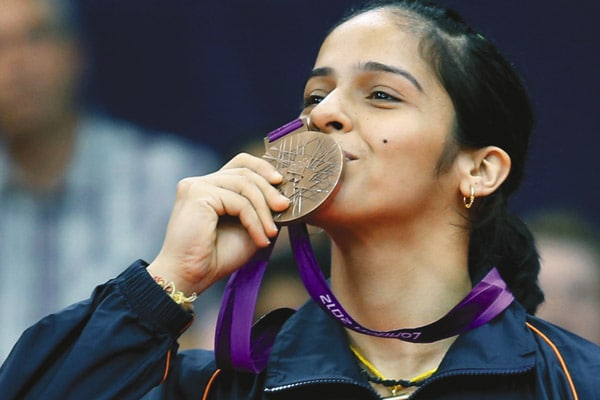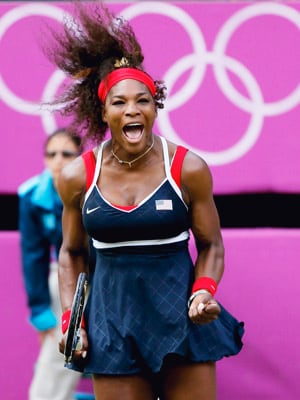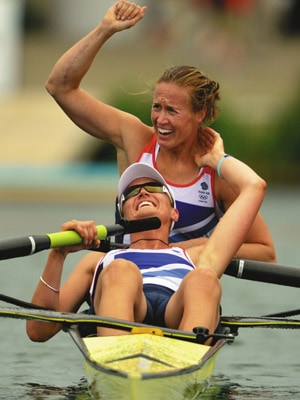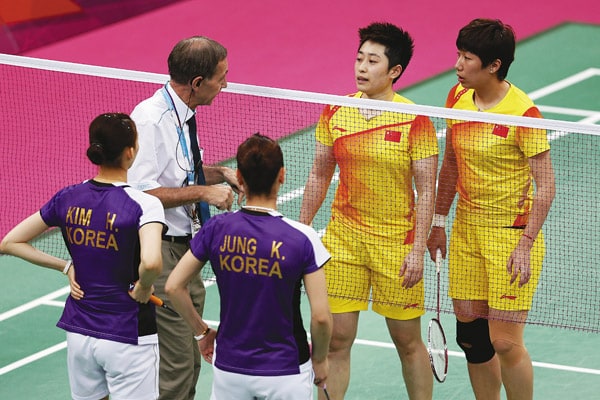
India's Middling Olympic Performance
Save for badminton, women’s boxing and shooting, performances were way below expectations
True, it is the best-ever medal haul from India. A tally of four medals with one silver and three bronze is greater than the three won four years ago, but the absence of a gold makes it look thinner in quality. (India's challenge in wrestling was yet to begin at the time of writing this article for the magazine)
The Indian story of the Games may well be MC Mary Kom. This, in a manner of speaking, was her first and last shot at glory. She was the face her sport used to get women’s boxing into the Olympic agenda.
The 29-year-old mother of two has been candid enough to admit that she virtually lived to see the sport come to Olympic Games. And when it did, the federation and International Olympic Committee limited it to three weight categories—the lowest of which was still way above the one where Mary Kom had achieved all her glory.
Yet, Mary Kom was resilient enough to fight in a higher category. From 45 kg, where she began her career in 2001, she moved to 46 and then 48. At the Olympics she had to fight in the 51kg category. Shorter, and possessing metabolism that makes it difficult to gain weight, Mary Kom literally punched way above her weight.
She lost out to the eventual champion, Britain’s Nicola Adams. Still smiling in defeat, Mary Kom stole the hearts of 1.2 billion Indians by apologising for not winning a gold or silver.
Hey Mary, thank you for staying on for so long, when you could well have been forgiven for missing the Olympics and arranging for your twin sons’ fifth birthday party on the day you fought your first bout at the Olympics.
Shuttling to Glory
In a sport where Chinese intrigue dominates, Saina Nehwal has broken through in a manner reminiscent of Prakash Padukone making his way past a wall that had bricks of Indonesian, Chinese and Danish make embedded in it.
Back in the 1980s, when Padukone ploughed a lone furrow, it was him against the dominant Indonesians and a sprinkling of Chinese and Danish stars. Now it is Saina versus the Chinese.
Four years ago, as an 18-year-old, Saina was upset and on the verge of crying as she let go of an 11-4 lead and lost in the quarter-finals of the women’s singles at Beijing. Now as a 22-year-old, she is mature beyond her years, and knows what an Olympic medal can do for her sport in India.
If she has any doubts on that, Pullela Gopichand, her coach, and one of the only two Indians to win the All England title, says, “This medal was important. Saina can and will do better, but an Olympic medal can change the face of Indian badminton. We have the depth and we need to nurse it for Rio [2016].” What he makes clear without saying it in so many words is that he also wants to take on the Chinese.
Saina got the bronze when her opponent Wang Xin conceded after the first game on account of injury. But the medal should come without an asterisk, for Saina is among the fittest in her sport and she was showing all signs of fighting her way back as she moved from 14-20 to 18-20 before losing the first game.
Saina’s performance may have overshadowed Parupalli Kashyap’s historic entry into men’s singles quarter-finals, but he has it in him to go higher. Jwala Gutta and V Diju may not have done justice to themselves in mixed doubles, but Jwala and Ashwini Ponappa came within a whisker of making the knock-outs and they had it in them to challenge for a medal for, last year they won a bronze at the same venue in World Championships.
India Can Become a World Force in Badminton

Badminton seems to produce a string of modest superstars. Prakash Padukone, the late Syed Modi, Pullela Gopichand and now Saina Nehwal. And there are a few more in the assembly line.
Padukone started it back in 1994 with his Prakash Padukone Badminton Academy. Gopichand started his academy around 2004. Now between the two academies, results are beginning to show.
Soon after Nehwal’s medal-winning performance , Gopichand said, “An Olympic medal will raise awareness and bring in more sponsors overall for the sport.”
There is no denying the fact that India is slowly but steadily growing into a major force in badminton.
“There are a lot of youngsters coming up. It is tough to single out players, but there are players like PV Sindhu (No 26 among women), Sourabh Varma, Sameer Varma, Guru Saidutt and many others,” adds Gopichand, when pushed for names.
For the record, India has 10 players in the world’s top-100 among men, the same as Malaysia, while China has only five (but all are in the top-20). Denmark has nine in the top-100 and Indonesia seven. So, that should make India a badminton superpower. The only difference is that none of the Indians are in top-20, but it is only a matter of time before this talent explodes onto the world stage. Among women, India, led by Saina Nehwal, has four in the world’s top-100 and another two at No. 101 and 104.
Shooting Keeps the Streak Going
Shooting brought India a medal for the third successive Games. Beginning with Rajyavardhan Rathore’s silver in Athens, the winning streak continued with a gold from Abhinav Bindra in Beijing. There was no gold this time, but there were two medals—a bronze from Gagan Narang, and a silver from Vijay Kumar, who understandably felt hurt that he has been described as a ‘surprise’ medallist.
Fourth in the two-day qualification, the rules of his event stipulated that all finalists begin with a clean slate once again. Kumar stayed among the top-3 all through the final.
The medal did not surprise Kumar, who said, “I am the National champion since 2004; I won two gold medals with new Games Record in 2006 Melbourne Commonwealth Games; a gold and a bronze in Doha Asiad and a Silver in world Championship in China, three gold and a silver in 2010 Commonwealth Games and two bronze in Guangzhou Asian Games. So, if my medal has still surprised people and media I can’t help it.”
For Narang, who has tasted success in every major competition, a bronze might have seemed small compensation.
Ronjan Sodhi’s participation and failure in double trap elicited unfair and veiled barbs. But considering these were his first Games and he shot very well for 72 of the 75 shots before faltering in the last three, he does not deserve to be dismissed.
The collective story of ‘so-near-and-yet-so-far’ belonged to shooter Joydeep Karmakar, who finished fourth in 50m prone, and to boxers Devendro Singh and Vijender Singh, who lost in quarter-finals, one bout away from a bronze medal. Discus duo Vikas Gowda and Krishna Poonia may have made the final, which was creditable, but a medal was always out of their reach.
Of the three who won medals four years ago, gold medallist Abhinav Bindra and bronze medallist Vijender failed to land another medal. Sushil Kumar, who was still to get into the ring at the time of writing, does have a chance in 66 kg freestyle wrestling.
Athletes, barring the discus duo Vikas Gowda in men and Krishna Poonia among women, who made the final, were disappointing. The tennis contingent did little to justify the brouhaha they created at the time of selection. The much-hyped archery contingent of six never progressed beyond the second round and the hockey team was unable to win a single league game.
The rest like table tennis, judo, rowing, swimming and weightlifting did what they were expected to—which was making up numbers.
DIARY NOTES
A different Wimbledon
The strawberries and cream were there and so was the rain. But you will never see another Olympic match at Wimbledon. Nor will you see tennis players in colourful clothing or a Wimbledon with no Pimms.

The ‘Home of Tennis” wore a different look. The green backdrops made way for the purple screens with the London 2012 logo and Olympic rings in white. The ‘whites only’ Wimbledon clothing code was set aside as players turned out in national colours. Serena Williams was dressed in patriotic red, white and blue stars and stripes, while Roger Federer marked the Swiss National Day in red shirt, red bandana and white shorts.
The grassed Aorangi Terrace, known as Henman Hill, too, was changed as the floral Wimbledon logo was replaced by a colourful Olympic rings display. There was no Pimms either, because they are not the sponsors!
Image: Mike Blake / Reuters
‘Titanic’ survivor’s 88-year-old reign ends in mixed doubles
When Victoria Azarenka and Max Mirnyi of Belarus won the mixed doubles, they took over from the reigning Olympic mixed doubles champions Richard Norris Williams and Hazel Hotchkiss Wightman of the US, who won the gold when the event was last played in 1924. It ended their 88-year-old reign.
Williams, who died in June 1968, was a survivor from the Titanic, which went down in 1912, exactly a 100 years ago. Williams spent more than six hours in the freezing waters of the Atlantic before his rescue. He was told that his legs might have to be amputated. But he preferred to walk in pain and the rest is history.
Williams, brought up in Switzerland, and his father, Charles Duane Williams were going to America on the Titanic to play tournaments during the summer before enrolling at Harvard University that autumn. Charles was killed in the Titanic disaster.
Not only did Richard Williams refuse to accept amputation, he walked through pain and seven weeks later won the Pennsylvania state championship followed by the clay court championships. He went on to become No 2 in the US by end 1912. In 1914, he won the US Open beating another Titanic survivor Karl Behr, also from US, in the quarterfinals.
Omega times it with Dicken’s bicentenary
The House of St Barnabas, an 18th century Georgian townhouse on Soho Square, has been providing support for the homeless for 160 years. This house also has a connection to Charles Dickens, whose bicentenary is being marked this year. This house was used as a model for the London lodgings of Dr Manette and Lucie in A Tale of Two Cities, which contrasts life in London and Paris around the time of the French Revolution.
The house in Soho has one of the very few remaining private gardens, called the Secret Garden and it is now the Omega House for the Olympics. The Garden has a large screen TV; guests can relax and watch events or simply party.
Each room has been designed to complement a watch collection. The space-themed Speedmaster Room, for example, was named after the first watch worn on the moon in 1969 by Buzz Aldrin.
This venue was originally an accommodation for the homeless. In 2006, it was closed and re-launched as a ‘for-hire’ event venue and life skills centre. The revenue generated is used for charity. Much of the stylish re-modelling done by Omega will stay and enhance the value of the House after the Games.

British soldier rows to gold, looks forward to posting in Afghanistan
British soldiers, who did duty in Afghanistan, have been requisitioned at various places by the LOCOG. They also contributed a gold medal through Heather Stanning, a Sandhurst-trained officer in the Royal Artillery, who had been on special training leave since 2010. But once the competition is over, the 27-year-old has set her sights on a posting to Helmand, a province in Afghanistan. Stanning was cheered by her Army comrades in Afghanistan as she won Britain’s first rowing gold at Eton Dorney. She has been enrolled on the unit’s next tour of the war-torn province. She will be deployed later next year.
Image: Eric Feferberg / Reuters
Away from prying eyes, a Safe House for athletes
Oakley, the eyewear company, has since 1996 been running its ‘Athlete Safehouse’ where limited non-athletic guests are invited, simply because it is a place where athletes can spend time with family and friends, who otherwise cannot visit them in the Olympic Village. Athletes from all over the globe drop in to catch a meal, meet friends and surf the net.
Thee SafeHouse, where athletes can also get their customised eyewear assembled, took more than two-and-a-half years and millions of dollars to prepare. Staffed by over 40 people, it is located right next to Tower Bridge at the posh London Design Museum.
IOC looks at coaches, too, in badminton controversy
Badminton had its moment—well, much more than a moment—of shame as players indulged in ‘match-fixing’ in front of millions of viewers in women’s doubles badminton. The players were disqualified and sent home, but an upset International Olympic Committee is taking the matter further ahead, and has asked for an inquiry into the coaches and team officials.

Image: Bazuki Muhammad / Reuters
“We have asked to look into it to see if there are any issues to answer similarly for the coaches,” said IOC spokesman Mark Adams. “It’s important to make sure it’s not just the athletes that are punished.”
Eight women badminton players, including four from Korea and two each from China and Indonesia were disqualified for trying to lose their group matches in a bid to secure favourable draw in the knock-out stage.
Li Yongbo, head coach of the Chinese badminton team, apologised in public. “As the head coach, I owe the fans and the Chinese an apology,” Li said. “Chinese players failed to demonstrate their fighting spirit. It’s me to blame.”
Not bitter-sweet, but “bitter-tweet” !
On the day of the Double Trap, 2004 Athens silver medallist Rajyavardhan Rathore tweeted: “The two other WR holders are in the finals: Fokeev of RUS and Peter of UK.. Ind Shooting federation decided to keep the 3rd WR holder out.” The reference was to himself, as he shares the world record! For the record, Peter Wilson won the gold, and India’s Ronjan Sodhi, who shot a blank in his third last shot, failed to make the final.
(This story appears in the 30 November, -0001 issue of Forbes India. To visit our Archives, click here.)





